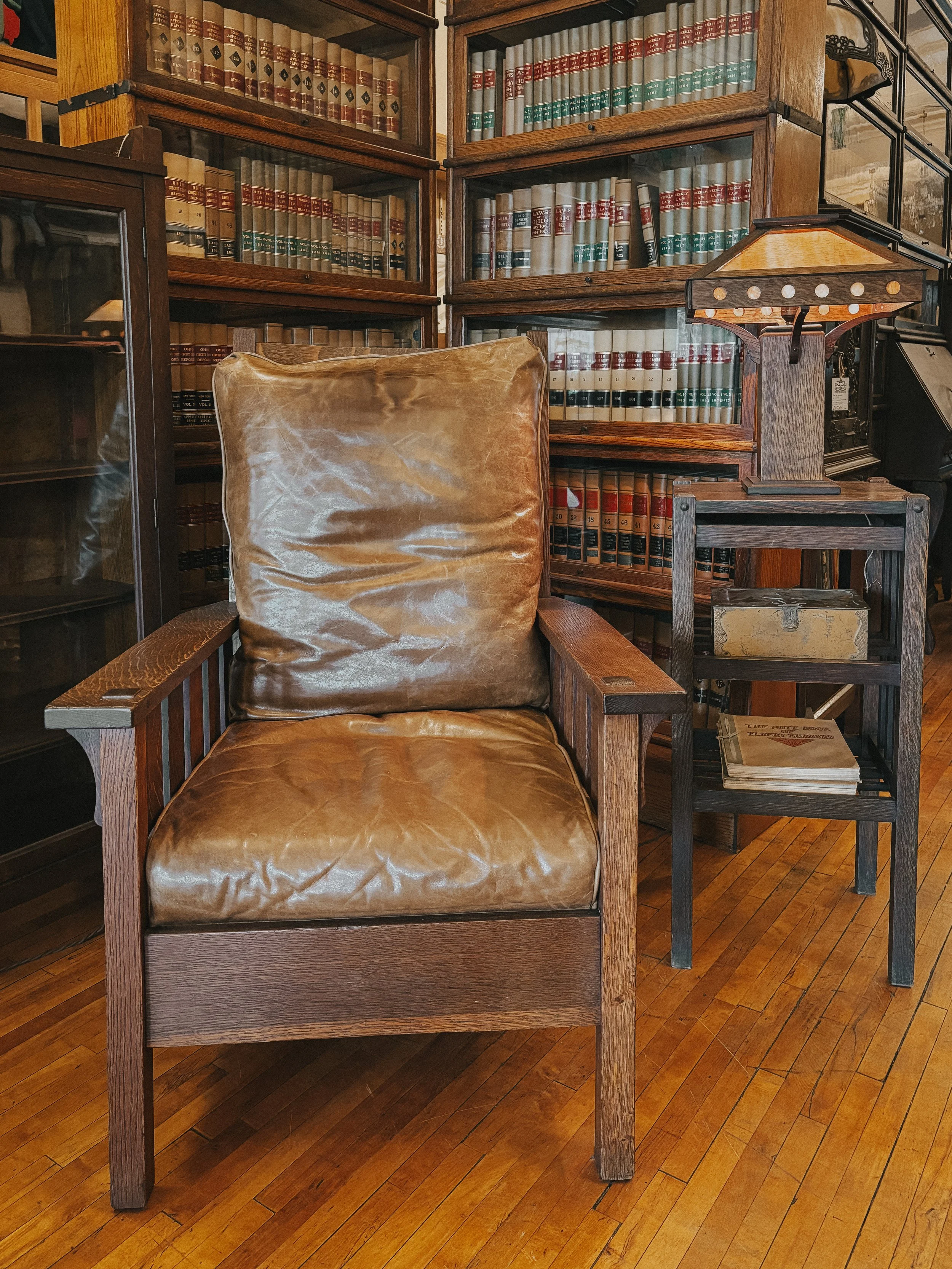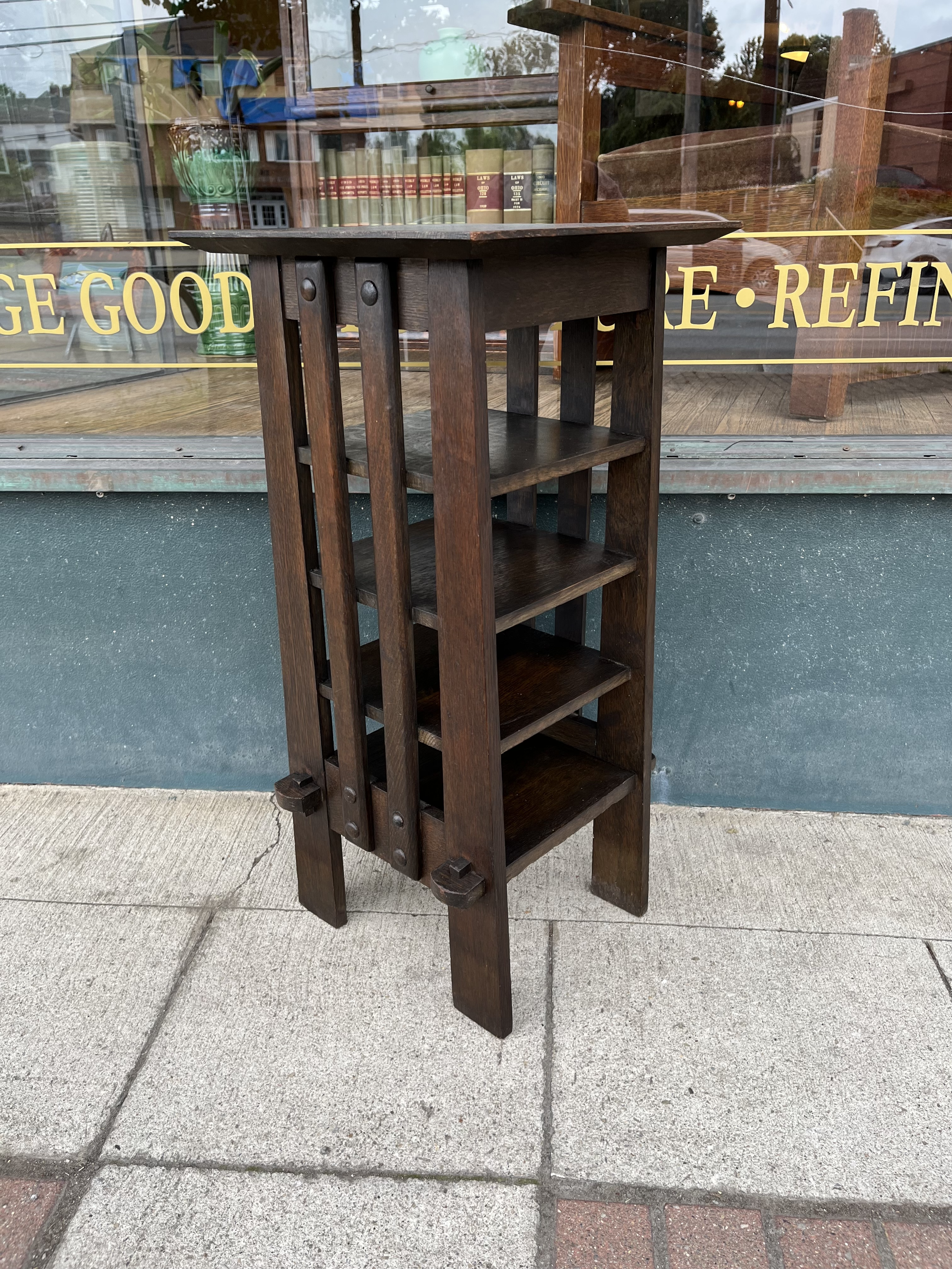From Year 1905 to Instagram: Telling the Story of a Quiet Rebellion
When Gustav Stickley released his Craftsman magazine in the early 1900s, he wasn’t just selling furniture—he was building a philosophy. Stickley believed that honest joinery, solid oak, and simple design could do more than furnish a home; they could shape a way of life. In a world awash with machine-made excess, Stickley invited Americans to live differently, to surround themselves with pieces that would last.
More than a century later, his words feel strikingly modern. Today, we still grapple with disposable culture, fast fashion, and flat-pack furniture that struggles to survive a single move. And yet, the same rebellion against waste and thoughtlessness—what we like to call a quiet rebellion—is alive and well. It’s just that instead of a printed magazine, we now carry the movement into the digital world, one post, one story, and one image at a time.
Michigan Chair Company Book Stand
The Original Storytelling: Stickley and His Era
Stickley and other Arts and Crafts leaders knew that good furniture needed good storytelling. His Craftsman magazine was packed with more than advertisements—it included essays on architecture, guidance on building a simple life, and even philosophical reflections on labor and beauty. He didn’t sell by shouting; he sold by educating.
At Euro Classics Antiques, we admire that model. We see the parallels between Stickley’s Craftsman and today’s social media feeds. Both serve as platforms not just to display furniture, but to spark conversations about values: craftsmanship, sustainability, and the enduring beauty of wood shaped by human hands.
Carrying the Torch on Instagram
Where Gustav Stickley once distributed printed pages across the country, we now use Instagram carousels, blog posts, and newsletters. A quiet rebellion takes on new life when we share images of quarter-sawn oak glowing in its original finish, or when we post videos of restoration work in progress.
For many younger collectors and homeowners, their first encounter with Arts and Crafts design isn’t in an auction catalog—it’s on a phone screen. That’s why we work to pair each piece with context: a Limbert settee isn’t just seating, it’s a link to a time when design, function and integrity mattered. A Stickley Brothers bookcase isn’t just storage, it’s an artifact of rebellion against the mass production factory system.
Gustav Stickley Fixed Morris Chair - Corner Barrister Bookcases - Mission Lamp - Lamp Stand
Why the Story Still Matters
Storytelling is what transforms a sideboard into a conversation piece, or a lamp into a symbol of artistry. Without the story, it’s just furniture. With the story, it’s a reminder that every mortise-and-tenon joint, every hand-cut peg, was made to outlast trends.
That’s why, whether we’re writing detailed blog posts, curating an email campaign, or uploading photos to Instagram, we always bring the story forward. The story matters because the ideals of the Arts and Crafts movement are as relevant in 2025 as they were in 1905: resist the disposable, embrace the meaningful, and surround yourself with beauty that endures.
Join the Quiet Rebellion
Euro Classics Antiques isn’t just a store; it’s part of this long continuum of makers, restorers, and collectors who believe in quality and integrity. When you walk through our showroom, you’re stepping into a philosophy that has been alive for more than a century.
Follow along on Instagram, stop by our Columbus shop, or simply explore our online catalog. Together, we can continue what Stickley started: a quiet rebellion, told piece by piece, story by story.
Michigan Chair Company Book Stand


